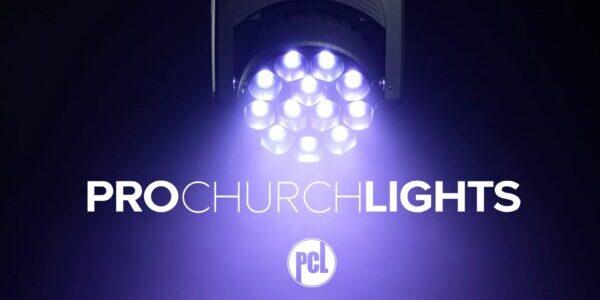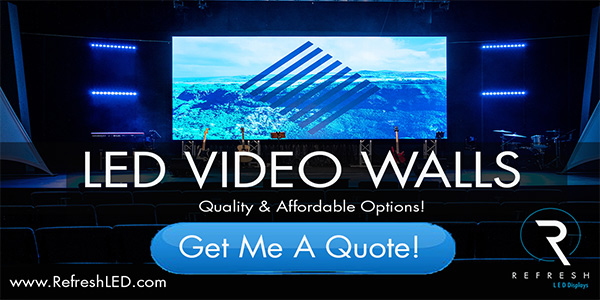This post sponsored by StageLightCompany.com—professional lighting for churches.
This article from Steven Hall is all using uplighting for your stage design—especially using LED lighting.
Any room can be transformed by uplighting. It’s very common for events to setup uplights within their room to help transform it into their desired atmosphere. Uplighting typically takes few fixtures, little setup, and creates an immersive atmosphere. A few lights up each wall in a room creates a whole new ambiance. The light reflected from the walls and ceiling fill the room with indirect light. This indirect light, which most people subconsciously prefer, is much less harsh than typical down light in a room.
This technique of uplighting a wall is cost effective and beautiful. We can easily use this same technique in stage lighting and design.
All scenic pieces have to be lit in some way to ensure they have maximum impact. Some are best lit with white light from the front (like a giant printed graphic), while others sets (like Coroplast or fabric) can significantly benefit from controllable lighting such as LED uplighting.
Many of my set designs incorporate backdrops. Some drops are flat while others contain lots of dimension. Either way, I end up with a lot of space to light with a limited amount of lights. Uplighting is typically my first option. On flat surfaces, uplighting creates a great blast of color. Where it really shines best though, is on dimensional surfaces. Uplighting a dimensional surface like crushed aluminum screen or a brick wall adds a great amount of shadows. These shadows create great interest and with a down light can create amazing blends of color too.
One of the keys to uplighting (and lighting in general) is to experiment. The closer you move an uplight to the surface, the more narrow the column of light will be and the deeper the shadows on dimensional sets will be. Moving them out from the wall will have the opposite effect and allow you to use less fixtures for the same amount of surface. Angling your uplights across your set can also create great dimension and shadows. I typically try a few different uplight setups with each set to find which one works best. Most times I end up with a mixture of vertical uplights and angled uplights. Further controlling these lights as separate groups on a lighting console can create some great changes in dynamics during your service.
Another way to increase the effectiveness of your lighting is to add down lights from the top of your scenic element. When possible, I layout my lighting so that it can be lit both from uplights and down lights to give me flexibility with how I light the set. Occasionally lighting a set from the sides also can add great interest to you surface.
Quick tips:
- Try to use every other down light and uplight to create a staggered effect with how you light your scenic.
- Have LED moving lights? Try to position them so that they can both light your stage and down light your scenic.
- Try a tilt effect on a moving light positioned as an uplight on a backdrop. A subtle and slow movement can give your backdrop energy and life.
- Try to setup your uplights at the center of your drop and focus them at increasing angles across your surface to create a fan of light.
- Try using a gobo to uplight scenic for additional texture.
Steven Hall is the Lighting Director at JourneyChurch.tv in Norman, OK.











Leave a Reply